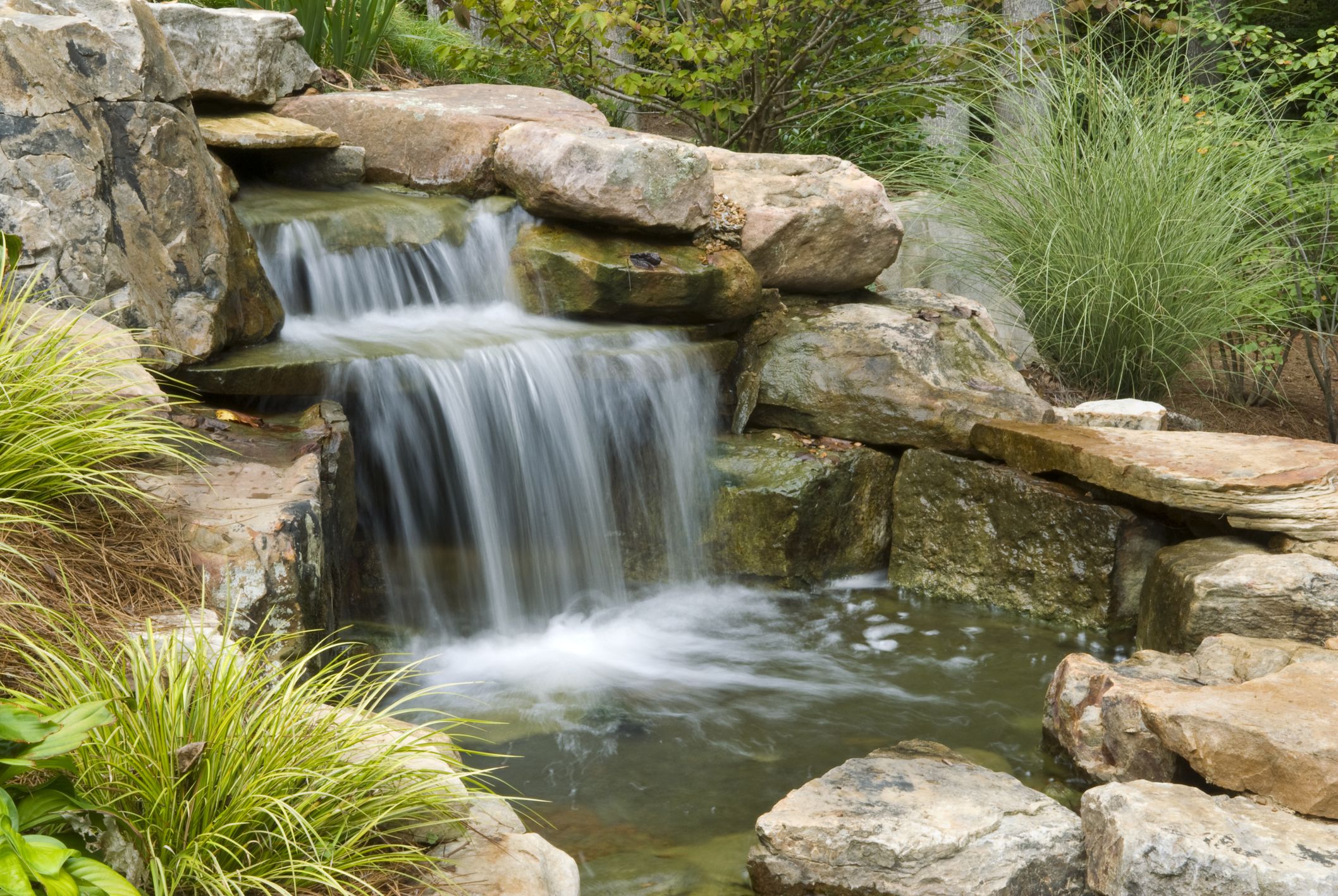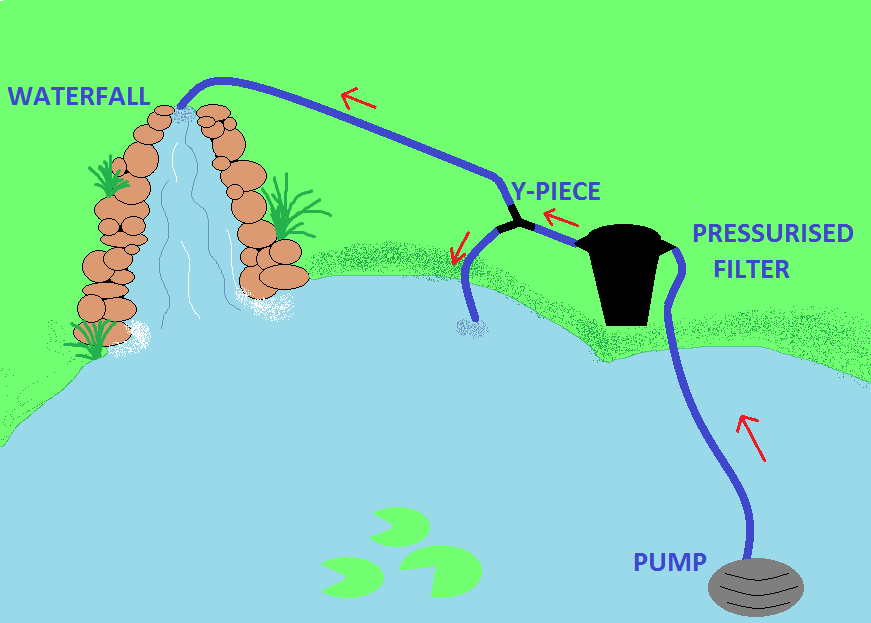
A useful guide covering many aspects of waterfalls.
Waterfalls
A waterfall is a very simple and effective water feature that adds a relaxing noise and focal point along with ever helpful water movement.
They are an ideal way to return the clean, filtered water back to the pond and will add oxygen into the water.
To maximise the enjoyment of the waterfall it is important to plan the build properly, just follow our guide to ensure everything is covered!
Waterfall Types
Preformed waterfalls are the easiest way of installing a feature to your existing pond. There are many types available including plastic, resin and fibreglass and they all come in a range of colours and sizes. They can be installed quickly and are the most popular way of adding a waterfall to a pond.
Self-made waterfalls allow you to create a bespoke design, perfectly suited to your needs. Using a section of pond liner and rocks/pebbles, you can match the waterfall to the style of your garden very easily. More work than a preformed mould however you have control over every aspect of the design.
Blade waterfalls offer a more modern take on the popular garden feature and are usually installed onto a wall or brickwork around the pond. They produce a sheet/curtain of water and often come with built in lights. These waterfalls generally require a powerful pump to maintain the curtain effect of the water.
Before you start
The first thing to consider is the location of your new waterfall! Sit in your favourite spot and visualise where a waterfall would fit into the landscape of your garden. Think about if you want the waterfall to be visible from your patio or decking, perhaps consider a location near the bedroom if you like the sound of running water at night. Your waterfall will need maintenance so ensure you allow room for easy access. Will the waterfall be supplied with water from the filter? If so, make sure the filter outlet can reach the top of the waterfall!
Before starting any waterfall, consider the size of the pump required as the higher and wider the waterfall, the larger the pump needed. Follow this basic calculation to work out the flow rate required for your waterfall:
Each 10cm of width will require 1000LPH.
Each 100cm of height will require 1000LPH.
Using this rule, a waterfall measuring 35cm wide and 1m high will require a flow rate of 4500LPH.
Use our Waterfall Calculator to help work out the flow rate you require!
If you will be feeding the waterfall with water from your filter, as in most garden ponds, then the volume of water may be determined by the filters flow-rate. If the volume of water leaving the filter is too much for the waterfall then some of the water will need diverting using a ‘Y’ adaptor. These adaptors will fit onto the filter’s outlet with one flow of water going to the waterfall and the other going straight back into the pond.
IMPORTANT: You can only feed the waterfall from a box filter if the filter outlet is higher than the top of the waterfall.

If you will be using a separate pump for your waterfall, simply use the above calculation to work out the flow rate required and select a pump that matches that flow rate. Most pond keepers will want to leave their filter running 24/7 but may want to turn the waterfall off, in this case a separate pump would be perfect.
Installing a preformed waterfall
Preformed moulded waterfalls will need to be positioned on a mound of dirt at the edge of the pond. It is recommended that you conceal a length of pond liner under the cascade to catch any water splash and return it to the pond. You can then build up the area around the waterfall with flowers, foliage and rocks or pebbles if desired.
Installing a self-made waterfall
You can install the waterfall on a natural slope or hill, or you can create the slope yourself using soil and sand. Lots of pond keepers will have a spare length of pond liner and underlay left over from when they installed their pond, this can be used to create a base for the waterfall. Don’t worry if you have none left over, small sections of liner are available to purchase at very reasonable costs. The liner can be hidden with boulders, rocks and pebbles, larger ones may need concreting in place. It is important to paint the concrete using a pond sealer such as G4 to prevent lime leaking into the water. You can fill in any gaps between the rocks using a specially designed product such as this Waterfall Foam.
